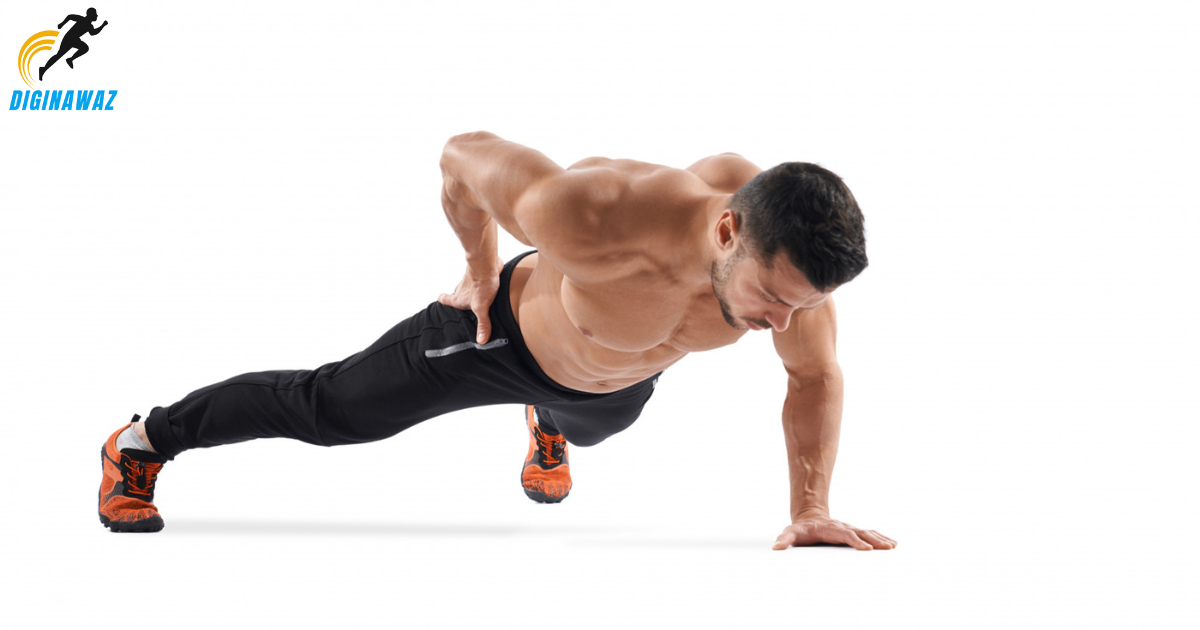Push up Exercise Benefits
Learn more about how push-ups can be good for your health and which muscles they work. Push up exercise benefits workout at gym.
Push-ups are a popular bodyweight exercise that offer a wide range of benefits for your overall fitness and strength. Here are some of the key benefits of incorporating push-ups into your workout routine:
Upper Body Strength: Push-ups primarily target your chest muscles (pectoralis major and minor), shoulders (deltoids), and triceps. Regularly performing push-ups can help increase your upper body strength, leading to improved functional fitness.
Core Stability: Push-ups engage your core muscles, including the rectus abdominis, obliques, and transverse abdominis, to stabilize your body as you move up and down. This helps improve your overall core strength and stability.
Shoulder Stability: Push-ups require the activation of the muscles around your shoulder joints, helping to enhance shoulder stability and reduce the risk of injuries.
Functional Fitness: Push-ups mimic many daily movements, making them a functional exercise that can improve your ability to perform everyday activities with greater ease.
No Equipment Required: Push-ups are a bodyweight exercise, which means you can do them anywhere without the need for specialized equipment. This makes them a convenient option for staying active.
Versatility: Push-ups can be modified to suit different fitness levels. You can start with easier variations and gradually progress to more challenging ones as you get stronger.
Improved Posture: Strengthening your chest, shoulders, and core muscles through push-ups can contribute to better posture by helping to counteract the effects of muscle imbalances and weaknesses.
Cardiovascular Health: While push-ups are not a traditional cardiovascular exercise, they do engage multiple muscle groups, which can increase your heart rate and provide a minor cardiovascular benefit.
Time Efficiency: Push-ups are a compound exercise that works multiple muscle groups simultaneously. This means you can get a lot of benefits in a short amount of time.
Variety of Variations: There are numerous push-up variations that can target different muscle groups or provide varying degrees of challenge. Examples include wide-grip push-ups, diamond push-ups, decline push-ups, and more.
Muscle Endurance: Performing high repetitions of push-ups can help improve muscle endurance, allowing you to sustain physical activities for longer periods without getting fatigued.
Incorporates Multiple Muscle Groups: Push-ups engage not only your chest, shoulders, and triceps but also your back, biceps, and even your legs to some extent, making it a comprehensive exercise.
Remember that while push-ups offer many benefits, it’s important to maintain proper form to avoid strain or injury. If you’re new to push-ups, consider starting with easier variations or performing them with your knees on the ground. As you progress, you can gradually increase the difficulty and challenge yourself with more advanced variations. If you have any existing health conditions or concerns, it’s a good idea to consult a fitness professional or healthcare provider before starting a new exercise routine.
Push up workout
Certainly! Here’s a simple push-up workout routine that you can follow. This routine is designed to gradually increase in intensity and challenge as you progress. Make sure to warm up before starting the workout and cool down afterwards to prevent injury and promote flexibility.
Weeks 1-2: Building Foundation
Perform this routine every other day for two weeks. Aim for 3 sets of each exercise with 8-10 repetitions in each set. If you find regular push-ups too challenging, start with knee push-ups.
Knee Push-Ups: 3 sets of 8-10 reps
Start in a plank position with your knees on the ground.
Lower your body towards the ground by bending your elbows.
Push back up to the starting position.
Incline Push-Ups: 3 sets of 8-10 reps
Find an elevated surface like a bench or sturdy table.
Place your hands on the surface and walk your feet back to create an incline plank.
Perform push-ups in this elevated position.
Weeks 3-4: Progressing Intensity
Perform this routine every other day for two weeks. Aim for 3 sets of each exercise with 8-10 repetitions in each set.
Regular Push-Ups: 3 sets of 8-10 reps
Start in a plank position on your toes.
Lower your body towards the ground by bending your elbows.
Push back up to the starting position.
Incline Push-Ups: 3 sets of 8-10 reps (continue from previous weeks)
Weeks 5-6: Increasing Challenge
Perform this routine every other day for two weeks. Aim for 3 sets of each exercise with 8-10 repetitions in each set.
Regular Push-Ups: 3 sets of 8-10 reps
You should now be able to perform regular push-ups with greater ease.
Decline Push-Ups: 3 sets of 8-10 reps
Find an elevated surface like a bench.
Place your feet on the bench and your hands on the ground in a plank position.
Perform push-ups in this declined position.
Weeks 7-8: Advanced Variations
Perform this routine every other day for two weeks. Aim for 3 sets of each exercise with 8-10 repetitions in each set.
Regular Push-Ups: 3 sets of 8-10 reps
Diamond Push-Ups: 3 sets of 8-10 reps
Place your hands close together, forming a diamond shape with your thumbs and index fingers.
Perform push-ups in this hand position.
Remember to listen to your body and progress at a pace that is comfortable for you. If you ever experience pain or discomfort, it’s important to stop and reassess your form. As you continue to improve your strength and technique, you can explore even more advanced push-up variations to keep challenging yourself. Health Tips

